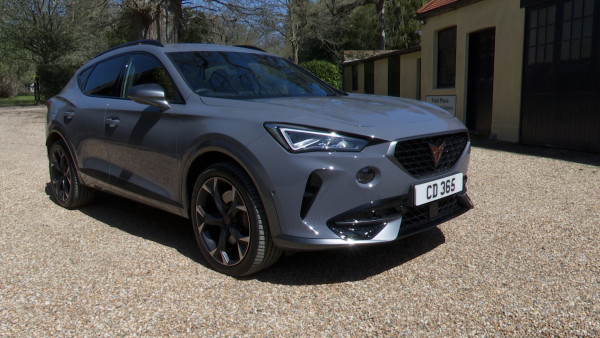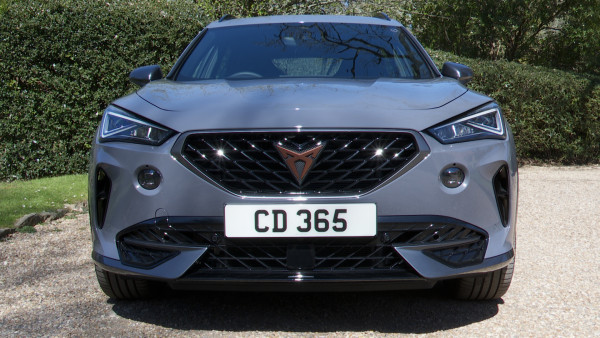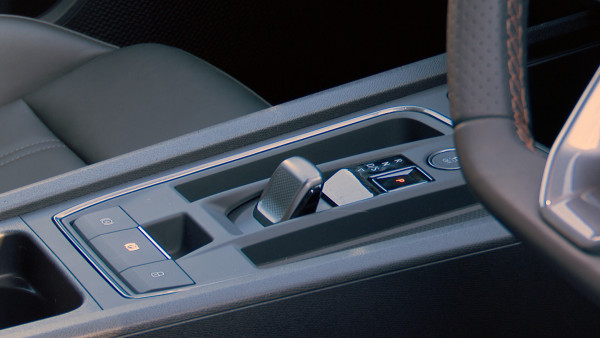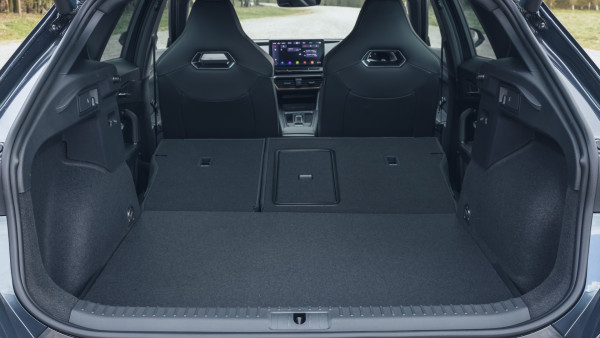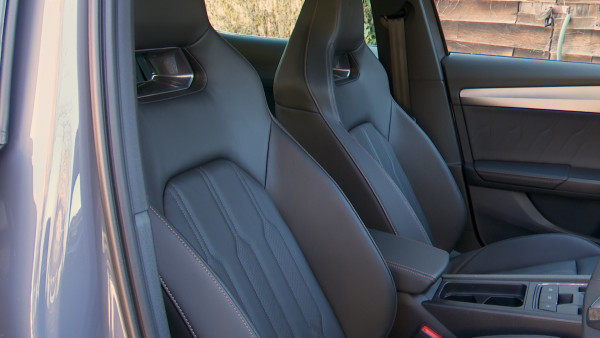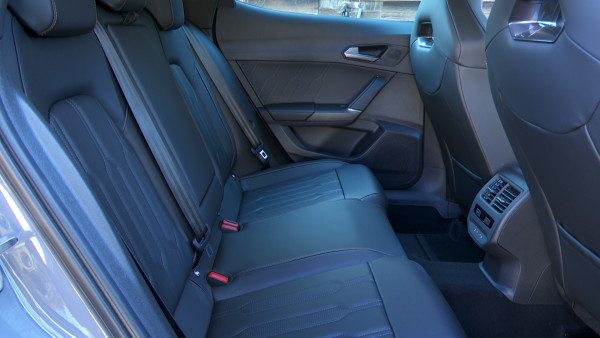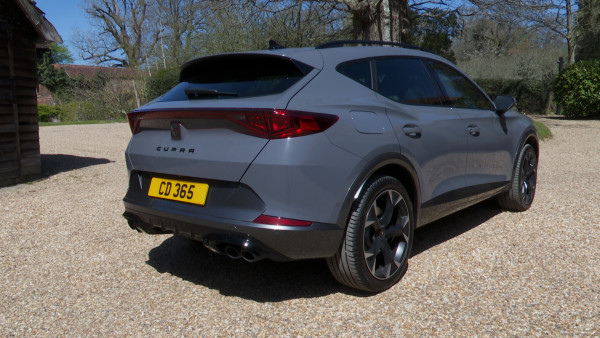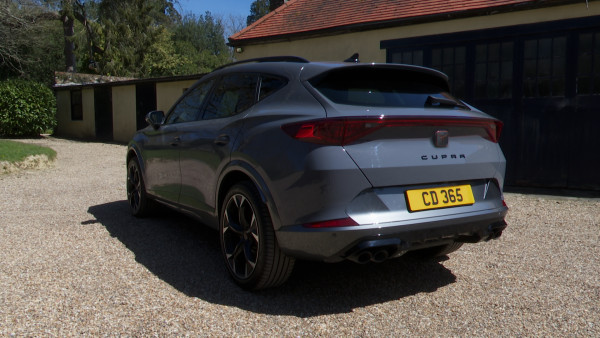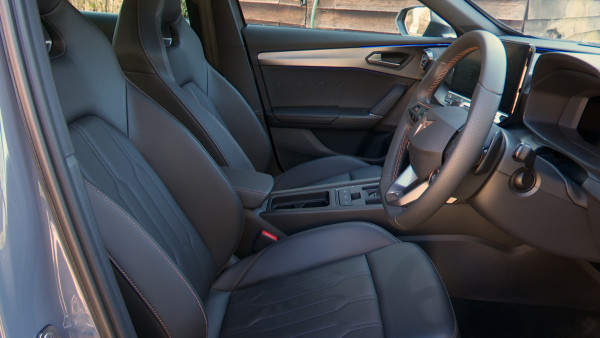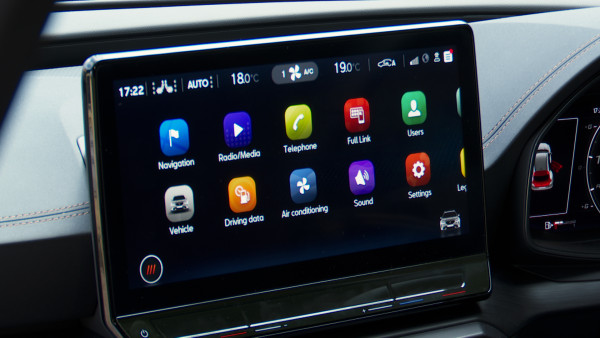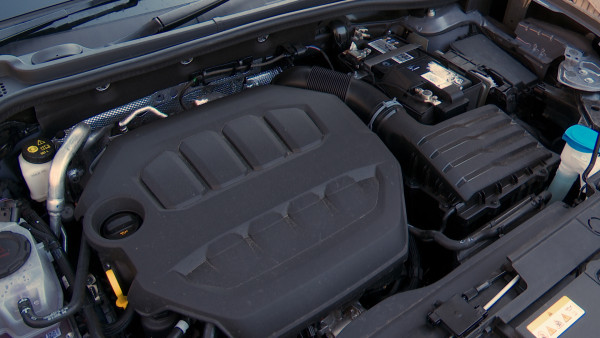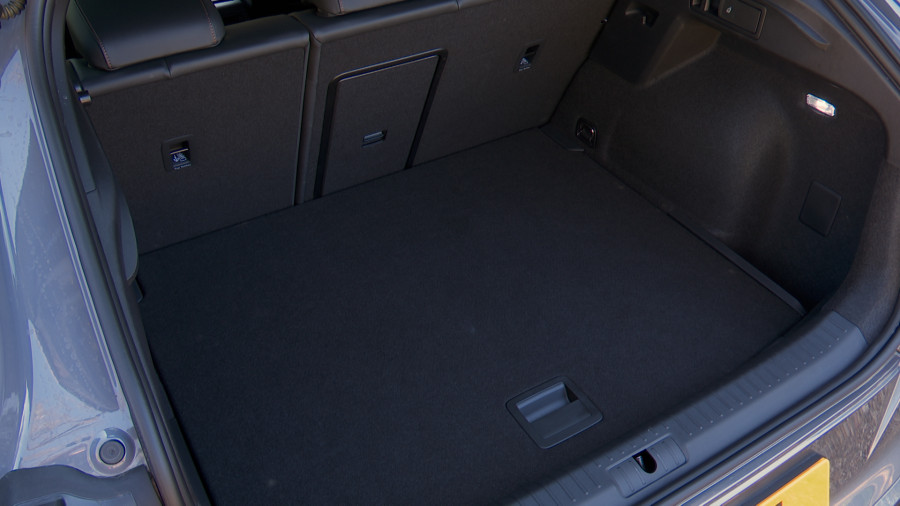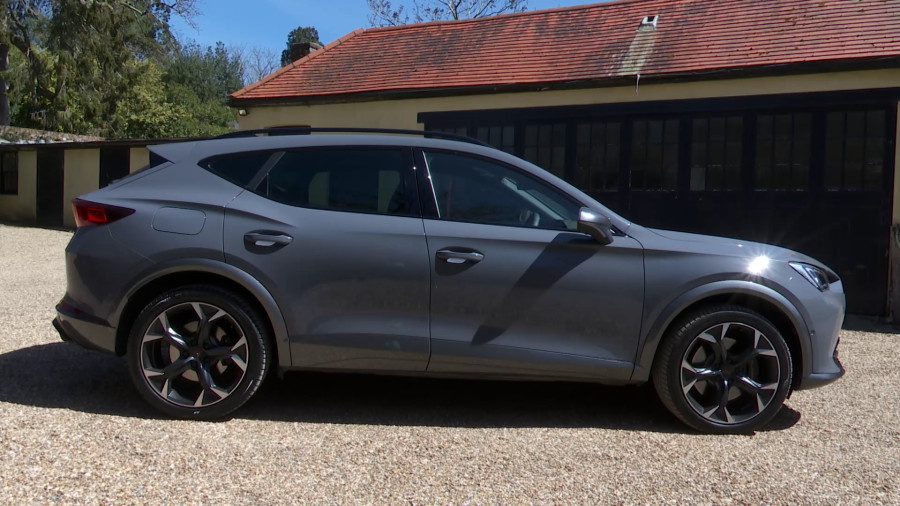We like the improved CUPRA Formentor. But will it be as appealing in e-HYBRID PHEV form? Jonathan Crouch takes a look.
Ten Second Review
The CUPRA performance brand struck out on its own with the Formentor, a lively Spanish take on the mid-sized performance SUV concept. This Coupe-Crossover will be a rare sight on our roads - and even rarer in this PHEV e-HYBRID plug-in form, but in this improved form, it deserves serious consideration from anyone prioritising efficiency and wanting something just a little different in this segment.
Background
When in 2018, Spanish maker SEAT announced that CUPRA would become a stand-alone brand, we were first served up merely a performance variant of the Iberian maker's Ateca Crossover. This Formentor model in contrast, launched in 2021, was a completely new design - well almost anyway. It did share a platform and some mechanicals with the Ateca, but everything else felt much more bespoke.
Now, SEAT wants CUPRA to mean more, creating, in its words, 'a range of unique, sophisticated performance models designed to captivate car enthusiasts'. The idea here, says the company, is 'to create cars not founded in nostalgia but rooted in the present'. Presumably, that's meant to be a dig at directly competing brands like Alfa Romeo and MINI. But can those kinds of ambitions be realised with the extra weight and complexity of a PHEV system on board? Let's check out this much improved Formentor e-Hybrid and find out.
Driving Experience
There are two front-driven e-Hybrid PHEV plug-in derivatives, both now usefully improved and offering either 204 or 272PS. In both cases, a 150PS 1.5-litre TSI petrol engine (up from 1.4-litres before) is mated to a 6-speed DSG auto gearbox and an 85kW electric motor powered by a now-larger 19.7kWh lithium-ion battery with a WLTP-rated all-electric driving range now quoted at 70 miles - nearly double that of the previous 13.0kWh version of this model.
Which of course you won't get anywhere near if you explore the quoted all-electric top speed of 80mph or start trying to throw the thing around too much (an extra kerb weight addition of up to 60kgs over a conventionally-engined Formentor discourages you from doing that anyway).
There's a set of drive modes - 'Comfort', 'Sport' and 'CUPRA', the latter for those red mist moments. These set-ups determine throttle response, gearshift timings from the DSG 7-speed auto, steering feel and the level of artificial engine noise you'll want pumped into the cabin. An extra 'Individual' menu option allows you to set your own parameters if you don't like the pre-set ones.
Design and Build
There are no significant visual changes differentiating this PHEV variant from other Formentors. As with the latest CUPRA Leon e-Hybrid, this updated Formentor e-Hybrid gets the brand's latest 'shark nose' front end that sees the car gain a broader grille and triangular-shaped LED headlights. The rear CUPRA badge is now illuminated. As before, the Formentor sits a little lower than most other performance SUVs and Crossovers. In fact, it's a full 150mm lower than the Ateca that it is based on and only 50mm higher than the CUPRA Leon hatchback. In terms of size, think Volvo XC40 or Audi Q3, but it has more pavement presence than either of those two cars, the design emphasis being on a long bonnet, which coupled with the lower height, gives the car a very dynamic appearance - and one that is completely distinctive.
Inside, the main change with this updated model is the adoption of a larger 12.9-inch central touchscreen which runs new operating software. The touch-sensitive slider controls for temperature and volume are now back-lit too. And the cabin materials are more environmentally-conscious; the cloth upholstery on the optional bucket seats is, for instance, now made from a 73% vegan textile.
As before, there's lots of brushed, dark aluminium with copper accents. And a fully-customisable 10-inch digital instrument binnacle; sitting behind a flat-bottomed steering wheel that houses both the engine start button and the 'CUPRA' driving mode buttons. There's the usual stubby VW Group auto gear lever. And a lovely orange LED strip that circumnavigates the top of the dash, flowing into the doors. The rear seat could comfortably take a couple of adults - but three would be tight. And out back, there's a 345-litre boot (down in size from the 420-litre space you get in the conventionally-engined models). With the seats folded, the e-Hybrid's total capacity is 1,370-litres.
Market and Model
Prices for the Formentor e-Hybrid start from around £41,500 from this updated model's launch and there's a wide choice of four trim levels, 'V1', 'V2', 'V3', 'VZ1', 'VZ2' and 'VZ3'. The name VZ comes from the word 'Veloz' in Spanish, translating as 'Speed' or 'Fast'. Even with base 'V1' trim, customers get quite a lot: 18-inch alloy wheels, a 12-inch infotainment touchscreen with connected navigation, a 10-inch digital driver binnacle, LED headlights, rain-sensing wipers, Adaptive Cruise Control, a wireless smartphone charger, a leather steering wheel and rear parking sensors.
With the 'VZ2', you also get 19-inch wheels, a powered tailgate, a heated steering wheel and a rear view camera. From 'VZ2' trim upwards, there's leather upholstery, powered front bucket seats, leather trim for the dash and doors. There's also a 'Safety and Driving Pack', which gives you Dynamic road sign display, High Beam Assist, Side Assist (effectively a blind spot monitor), Exit Assist (offering audible and visual warnings of approaching traffic when opening doors), Lane Change Assist and Emergency Assist. The 'VZ3' adds 19-inch 'Exclusive' copper/black alloy wheels and Brembo brakes.
Cost of Ownership
Both these improved Formentor e-Hybrid derivatives boast a WLTP-rated all-electric driving range of up to 70 miles (up from 34 miles before). Of course, in deciding the budgetary case for this PHEV CUPRA, you will of course need to factor in charging costs, but if you get your charging regime right on off-peak electricity that'll hopefully cost pennies rather than pounds to consume, these bills shouldn't be too great. The combined range of the petrol and electric motor is around 660 miles, making a plug-in Formentor an ideal comfortable car for the really long journeys that would probably defeat full-EV Crossovers in this class like, say, a Lexus UX 300e or a BMW iX1 - or CUPRA's own Born EV. And the electrified version of this CUPRA will charge much quicker than a full-EV: powering a PHEV Formentor up from a domestic socket would take around five hours, but using a garage wallbox, you'll be able to reduce your charging time period to around three and a half hours. Bear in mind that only a single Mode 3 charging cable is included as standard.
The quoted WLTP combined cycle fuel return for a Formentor e-HYBRID 204PS model is up to 235.4mpg. For the 'VZ' 272PS e-Hybrid variant, it's up to 188.3mpg. These are pie-in-the-sky figures of course. If you don't charge your Formentor e-Hybrid much and use a little of throttle, you'll be burning plenty of fuel - and possibly getting through quite a few sets of front tyres too.
Summary
CUPRA has tried to do something quite difficult here. Namely, take a lot of existing mechanicals and create something genuinely interesting and different from them, a particularly hard job in a market already awash with crossover clones. But, with this improved Formentor, they've very nearly managed it. And this car certainly adds up in e-Hybrid guise.
It looks distinctive, it drives well and the cabin is classily trimmed - lighting up beautifully at night. Plus there's all the kudos of owning a performance brand none of your friends will have heard of, yet a car with a completely proven set of underpinnings which in the case of this PHEV, promise the prospect of rare filling station visits. The now-enhanced e-Hybrid hardware adds a bit of extra weight, but unless you're really throwing the thing around, you won't really notice that. What you will notice is that this car has real character and identity. With this car, the whole 'Iberian Alfa Romeo' thing finally starts to make some sort of sense.
